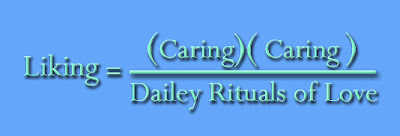Axiomatic Poems Part Two
I have been having some wonderful conversations with the mathematician Ray Balbes. Ray has been asking some very important questions concerning the axiomatic poem. Ray has also helped me by correcting mathematical errors in my nomenclature.
Ray also has had concerns with the idea of God being a viable substitute for successor within the Peano axioms. For God in this sense must be comparable to a mathematical function. I personally have no problem with this idea for my understanding of the word God is metaphorical anyway. Therefore, I can see this metaphoric structure of “God IS mathematical function” as being nested e.g. metaphors within metaphors. The question then would be is God a mathematical function? Alternatively, can we say God functions mathematically? Historically God is described beyond language so I would not try to convince anyone otherwise. I personally do not see God functioning mathematically as a mathematical Platonist would however, I do see the accessibility of ideas mathematically expressed as phenomena attributed to a deity. I believe if you denote phenomena with words, you can do the same with math. Furthermore, I would go on to say that if you can be inspired to connote it with words you can do the same with math for those type of inspirations fuel mathematical poetry.
Therefore, the poem addresses the dichotomy of God being created by men or men being created by God.
To help anyone see how the logic in Peano’s axioms is functioning correctly in the Blog entry of January 29th, I created another axiomatic poem to show some more structure. The disadvantage to creating another ‘equal’ poem is that the new poem focuses the semantics in such a way that limits the metaphorical content. The advantage is that it gives more semantic structure, which enables one to see the Peano logic with ease. So in essence, we now have an axiomatic poem, which has metamorphic qualities. We see that the Peano axioms function as the underlying paradigm for the poem however, it could be viewed as the source domain with the other two ‘axiomatic stanzas’ as the target domains for the ‘overall metaphor’. In this case, we have three structures separated by two equal signs.
- One is a number
- If x is a number, the successor of x is also a number.
- One is not the successor of any number.
- If two numbers have equal successors, they are equal.
- If a set of numbers contains the number one and it contains all the successors of its members then the set contains all the numbers
Poem #1 -- Peano’s string; a history of spiritual stories
- Abraham is a story
- If x is a story, the unique inspiration of x is also a story.
- Abraham is not the unique inspiration of any story
- If two stories have equal unique inspiration, they are equal.
- If a set of stories contains the story Abraham and it contains all the unique inspirations of its members then the set contains all the stories.
Poem #2 -- Peano’s string; a history of spiritual stories
- Abraham is a cat
- If x is a cat, the God of x is also a cat.
- Abraham is not the God of any cat.
- If two cats have equal Gods, they are equal.
- If a set of cats contains the cat Abraham and it contains all the Gods of its members then the set contains all the cats.
Poem #1 = Poem#2



















































